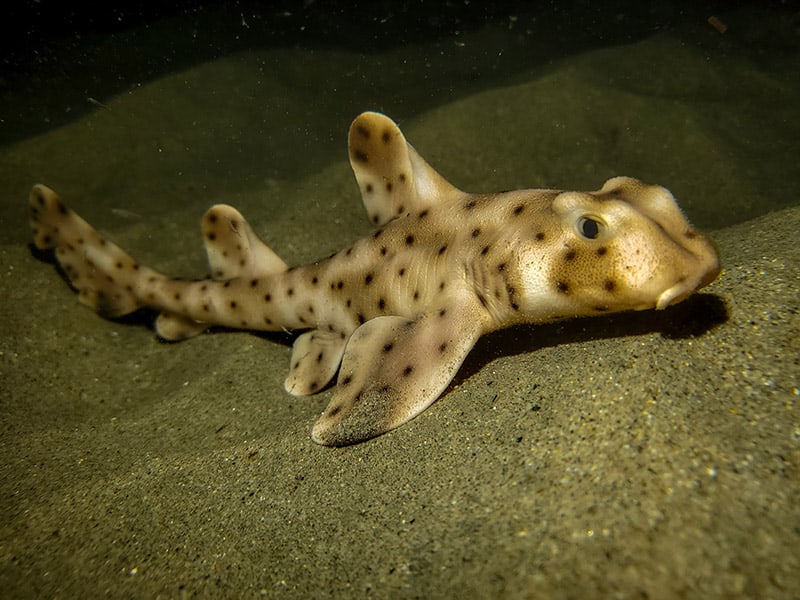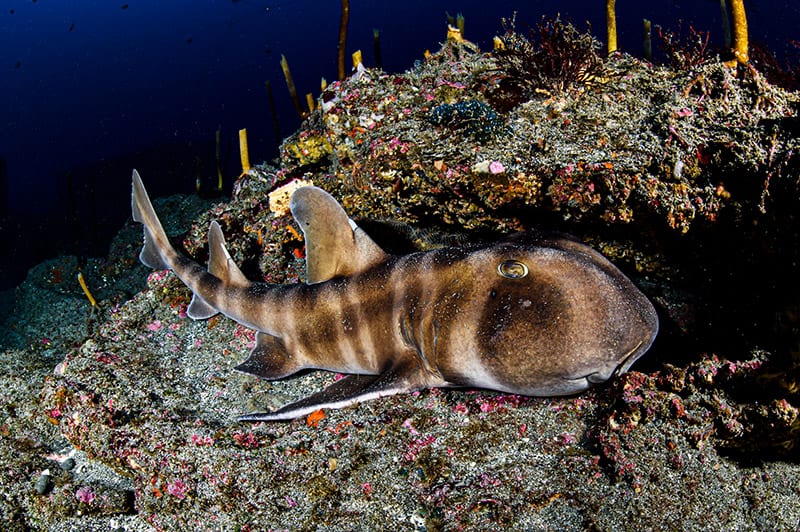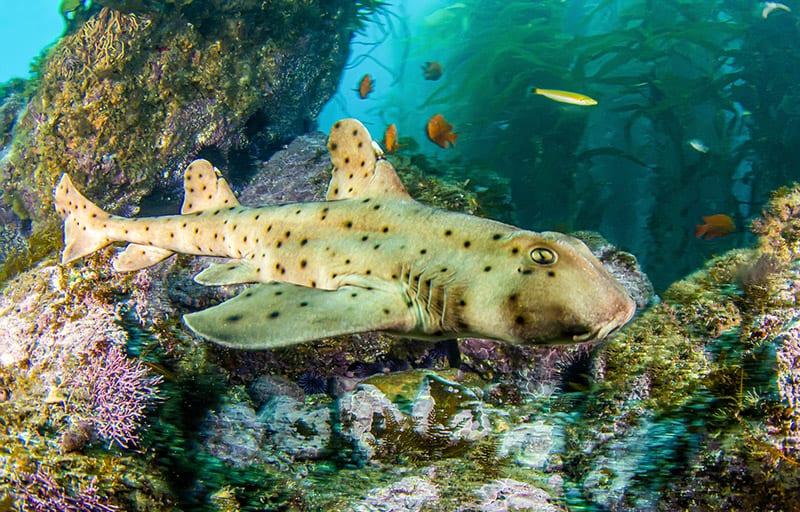The Horned Shark is usually very lazy and spends most of it’s time laying around on the bottom of the aquarium. This shark was so docile you could feed it by hand, though keep in mind that they do have sharp teeth and may bite if they feel provoked!
The Horned Shark (Bullhead Shark, Pig Shark, or Port Jacksons) gets it’s name from the two horns you see sticking up just in front of the dorsal fins.
These are a small sharks reaching 38 inches (96 cm), and fairly easy to maintain. in a large aquarium. One challenge to keep in mind, however, with keeping the Horned Shark (Bullhead Shark, Pig Shark, or Port Jacksons) is that they are actually a “cool-water” shark and some may do poorly in a “tropical” aquarium.
- For more Information on keeping marine fish see: Guide to a Happy, Healthy Marine Aquarium
Scientific Classification
| Kingdom: | Animalia |
| Phylum: | Actiniform |
| Class: | Elasmobranchii |
| Order: | Heterodontiformes |
| Family: | Heterodontidae |
| Genus: | Heterodontus |
| Species: | francisci |

Maintenance difficulty
The Horned Shark (Bullhead Shark, Pig Shark, or Port Jacksons) is easy to keep and is one of the few sharks that don’t require a humongous tank!
Maintenance
Feed all kinds of large meaty foods like small pieces of fish, squid, shrimp, and live goldfish. Best to feed small amounts several times a day.
Habitat: Natural geographic location
Eastern Pacific: central California, USA to the Gulf of California, and probably Ecuador and Peru. Sluggish, nocturnal, and mostly solitary species. Inhabits rocky bottoms, kelp beds, sandy draws between rocks, on sand flats, deep crevices and small caves and also large underwater caverns. Adults tend to return to the same resting place every day. They have broad muscular paired fins used as limbs for clambering on the bottom
Foods
In the wild they eat Feeds on benthic invertebrates, especially sea urchins, crabs and probably abalone, also fishes. See ‘maintenance’ above for aquarium foods.
Social Behaviors
The same as most bottom-feeding sharks, it gets along with other fish as long as they are large enough not to become lunch!
Sexual differences
The medial edges of the male’s pelvic fins are modified to form claspers. The claspers are tubelike organs designed to deliver sperm into the female’s reproductive tract. As the males grow older the claspers become more pronounced. The females do not have these.

Recommended light levels
Breeding/Reproduction
Oviparous, Egglayer, sometimes shark eggs are available for sale.
Temperature
This is a cold water fish, so may do poorly in a tropical aquarium.
Length/Diameter of fish
Horned Shark (Bullhead Shark, Pig Shark, or Port Jacksons) adults can grow to 96 cm (38 inches).
Minimum Tank Length/Size
A minimum 150 gallon aquarium is recommended.
Water Movement: Weak, Moderate, Strong
Water Region: Top, Middle, Bottom
Ususally spends its time resting on the bottom.
Availability
This fish is available from time to time available.
- Beginner Fish – Saltwater fish for beginners
- Community Fish – Peaceful Saltwater fish
- Hardy Fish – Hardy Saltwater fish
Featured Image Credit: Enessa Varnaeva, Shutterstock
